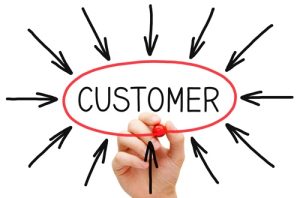 One of the many benefits of working for an advertising agency is that I get to experience working with numerous and diverse businesses. During my interactions one thing is very clear – to create consistency in the mind of the consumer, one needs a single, definable brand expression.
One of the many benefits of working for an advertising agency is that I get to experience working with numerous and diverse businesses. During my interactions one thing is very clear – to create consistency in the mind of the consumer, one needs a single, definable brand expression.
This works because in a highly fragmented world the consumer is looking for simplicity and easy to navigate signs to know which brands to transact with and which to avoid. From a business perspective, we focus on this because it drives efficiencies and gives us the competitive advantage.
Redefining your own rules
Before we became ‘digital’, corporates like Procter & Gamble could muscle out smaller brands by dominating the airwaves with larger budgets that created a ‘bigger’ brand feel. The execution of this single-minded brand expression is what needs a rethink.
Disruptive businesses, like Uber and 23andMe, play by a new set of rules. They don’t see digital as a marketing channel but rather as a way of thinking in order to provide the user with a differentiated and improved experience.
This makes big brand building irrelevant. Uber’s rise to success didn’t require a 360°, integrated marketing campaign. It built its brand through revolutionizing and leading a disruptive, yet delightful, taxi experience by using digital as the sharp end of the stick.
“When someone buys a Nike product, that needs to be the beginning of the relationship rather than the end.”
Collaborate to encourage participation
In order to meet this changing landscape, brand builders have to shift from control to collaboration by relinquishing control of branded assets. For example, Nike allows you to snap a pic of your run, overlay it with branding, and then share it on any social network.
Nike now has a branded User Generated piece of content that they had little control over. Another way to drive collaboration is to encourage participation.
Oreo recently allowed you to customize a message on its holiday promotion pack and then send it to a friend or loved one.
Focus on the brand experience
Ultimately it is about being more customer-centric. Your mind-set should be that the primary objective is to create a brand experience driven by the entire organisation rather than just marketing. These experiences need to create visible value.
It is no longer good enough having a Unique Selling Proposition because people can simply search on Google to find a matching, often more affordable, offering. It is about creating an emotional bond by providing delightful experiences that adds real value to one’s life.
Connect emotionally with your consumer
To drive this emotional connection, we create value beyond the purchase of a product or service. Looking at the consumer’s needs, Nike for instance found that people didn’t need better shoes to become a better athlete.
They uncovered that shoes and apparel are but a small, commoditised part of feeling like an athlete. It was more the ability to track, measure and compare your performance that allowed someone to feel like they are growing in their skill. Nike is becoming tethered to their consumers’ life by ‘gamifying’ their activity. Stefan Orlander, VP/GM Digital Sport, Nike says, “When someone buys a Nike product, that needs to be the beginning of the relationship rather than the end.”
Another example of this is Dulux. This paint brand developed the Amazing Spaces website that blends “interactive tools, video and in-person consultation to provide you with an interior design service that inspires and supports DIYers.”
Another way of creating an emotional connection is by providing an experience that is personalised. We all want to have a unique experience that feels like you had a hand in creating it. The Sephora app allows users to upload a pic of them, apply make-up virtually and once happy to purchase online.
NIKEiD is another prolific example of how a business can use technology to deliver an unsurpassed ability to personalize goods. On top of the digital ecosystem Nike provides, this product control powerfully entrenches loyalty.
A mix of collaboration and control
If you are a person that feels anxious when relinquishing control, then brand building in the digital age will be a real challenge for you. Not all is lost though. Even if you have a controlling mindset rather refocus your employees to start by building your brands by leading brand experiences through collaboration with your audience, rather than trying to command and control your brand building from a centralized point.
Another nuance to this would be the environment you are marketing in. Let’s revisit the Uber example. Although they grew a brand using a disruptive digital experience, they have to use a more traditional approach to marketing as competitors like Taxify and Lyft start to add to the noise of brands the consumer had to navigate through. Therefore a hybrid of control and collaboration might be needed to future-proof your brand and business.
Don’t give in to the experience killers. Strive to foster collaboration with your market while delivering more visible value to create a powerful, long-lasting emotional connection.
About the author: Mike Jones is Strategic Director at Native VML. He has a passion for the online world and a keen eye for how brands should behave in it.






